Welcome to the Botanarium
Our Botanarium is a fusion of botanical , taxonomic and morphological data on medicinal plants. Identification is the first stage in quality control when it comes to making herbal medicines and we welcome you to use this free resource to assist you in qualifying and confirming the plant species you have wildcrafted or purchased for medicinal use. This information is derived from over a decade of wildcrafting experience along with reputable herbal literature. See the references cited below for details. Check out our special offering below before you head on to the Botanarium data sheets. Enjoy!
Sign up to receive a gift!
Our Botanarium monographs series begins with Issue #1 WILD covering really useful information about wildcrafting medicinals. Things that herbal medicine makers find really handy like dried daily doses, monographical features and herbal qualities. This form is temporarily removed and will be replaced with a spam proof one shortly. Stay tuned to receive your free WILD guide ebook in future.
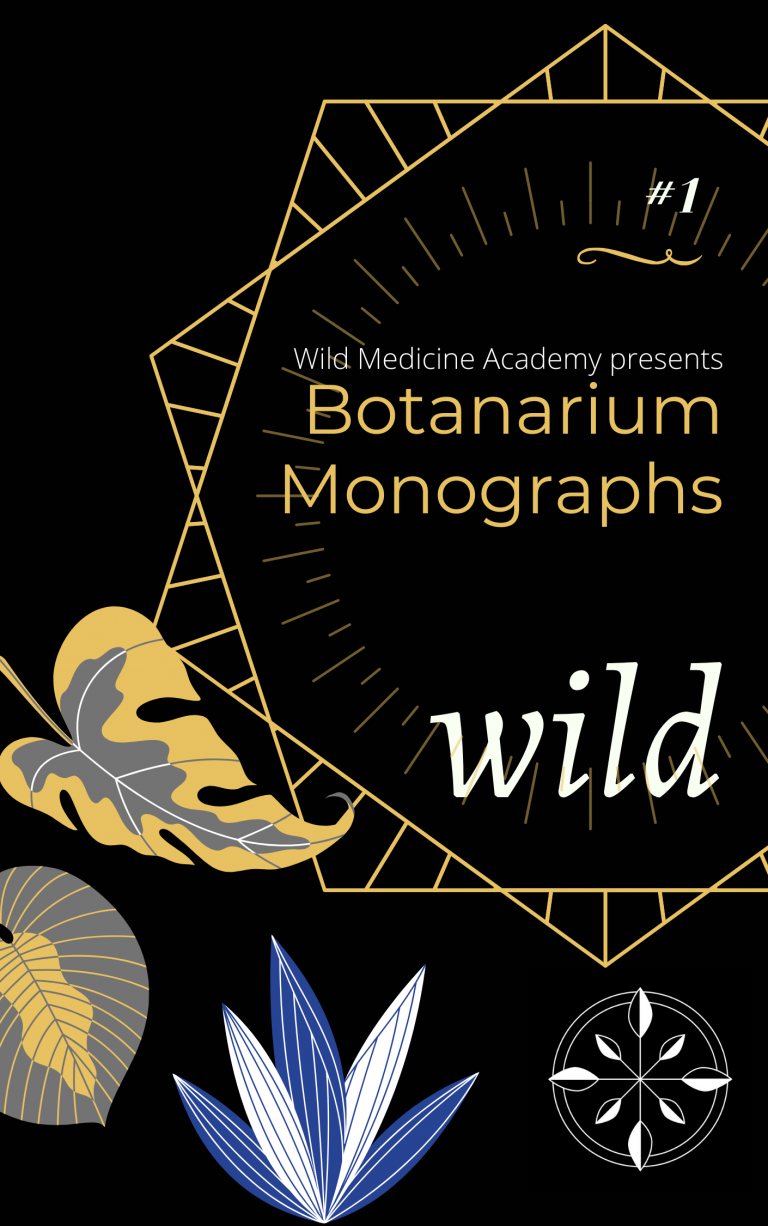
Taraxacum officinale
(Wigg) DANDELION

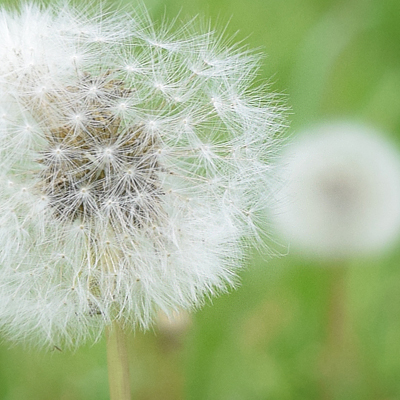
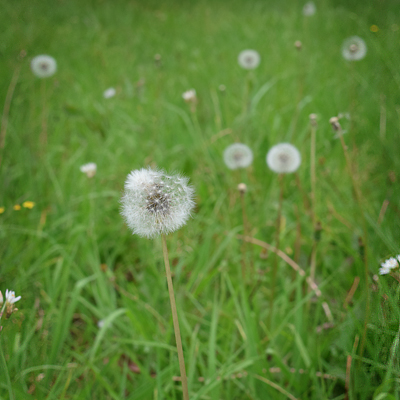
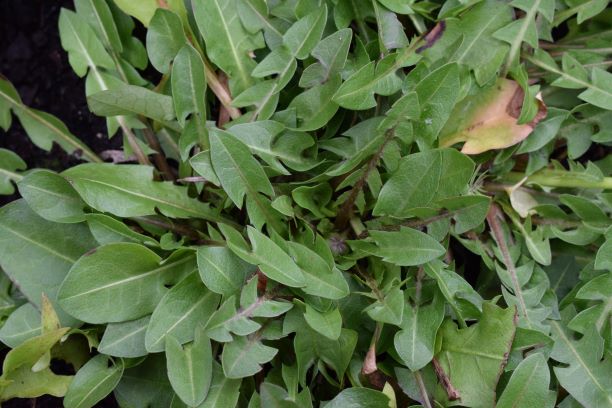

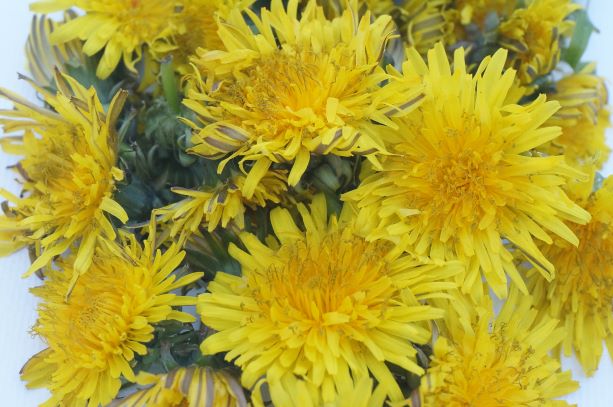
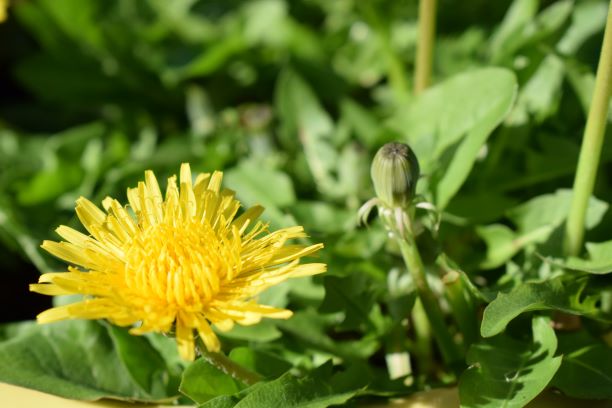

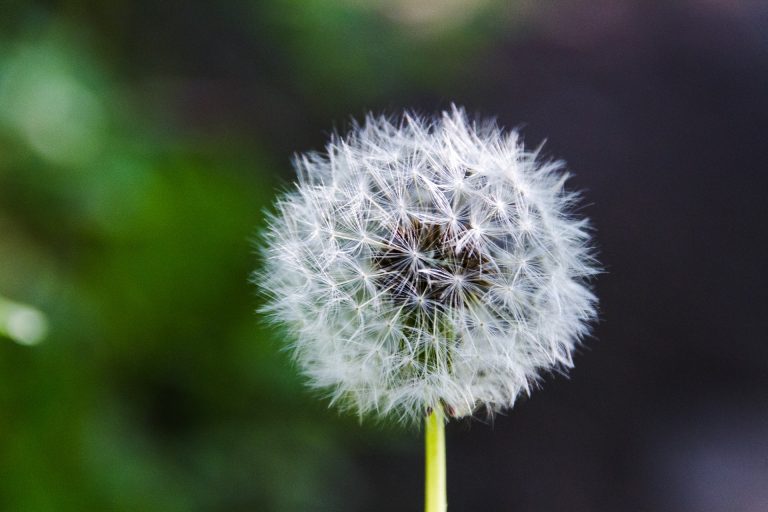
Geographic Distribution
Australia: East coast predominantly, NSW, VIC, TAS, WA.
World: Medicinal species predominantly Northern hemisphere and Eastern Europe
Posology
Dried leaf: 9 – 30g daily. Dried root: 9 – 15g daily. Juice of Leaf: 4 – 8mL daily
Growth
Perennial. Full light, shade, 4 – 40deg C. Soil: well watered, loamy, can tolerate infertile soil
Therapeutic Preparations
Infusion, decoction, salad, crisps, oxymel, tincture, juice, salve, ointment, infused oil
Taxonomy
Kingdom: Plantae
Phyla: Tracheophyta
Class: Angiospermatophyta
Order: Asterales
Family: Asteraceae
Subfamily: Cichorioidiaea
Tribe: Lactuceae
Genus: Taraxacum
Species: officinale
Common name: Dandelion
Morphological Features
- Flower: Borne on long hollow pedicel, Capitulum (head) inflorescence with 2 rows of bracts underneath. Rich in nectar (sweet taste). Flower heads to 5cm diameter. Bright yellow ligulate florets. Stigma has two lobes. Develop into seed head 10 -1 5 days after blooming
Leaf: Deep green and simple. Serrated margins. Up to 40cm long. Tip of all lobes point to leaf base. Apex is round when young and spear shaped when mature. Short petiole or absent. Hairless, thin and silky soft. Basal rosette arrangement
Stem: short stem giving rise to long petioles and hollow, cylindrical pinkish pedicel
- Fruit: Achenes 3 -4 mm long. Dry fruit. Cypsela contains pappus (a modified calyx) for wind dispersal. Achene is ribbed with sharp spines
Qualities
Leaf is bitter and cool, root is bitter and cool with an after-effect of heat, flower is sweet.
Parts Used
Root, stem, leaf, flower
Manufacture information can be found in our Botanarium Monograph #1 Wild ebook. Sign up to download above.
Sonchus oleraceus
(L) SOW THISTLE
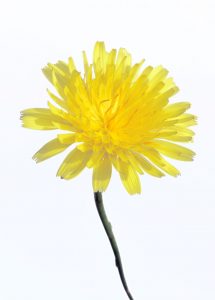
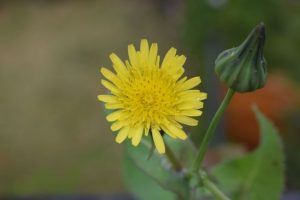
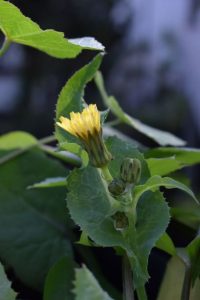
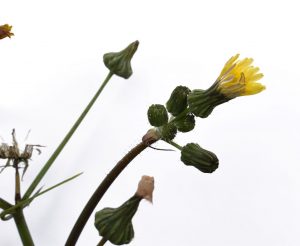
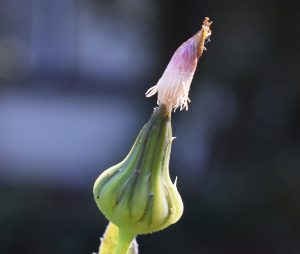
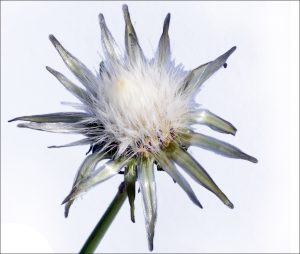
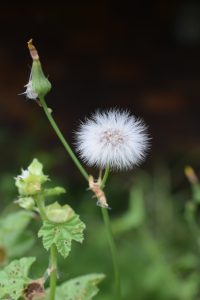
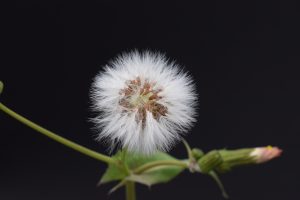


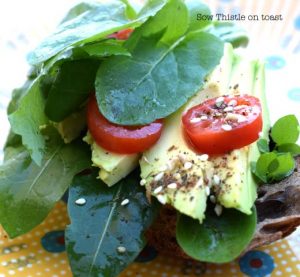

Geographic Distribution
Australia: All states and territories
World: Native to Europe and found throughout Europe, Americas, Africa and Australasia
Posology
Dried leaf: 20g daily. Dried root: 20 daily. Estimates.
Growth
Annual, biennial. Light: Full light preferred. 7 – 35deg C. Soil: moist, potassium rich.
Therapeutic Preparations
Infusion, decoction, salad, crisps, oxymel, tincture, juice
Taxonomy
Kingdom: Plantae
Phyla: Tracheophyta
Class: Angiospermatophyta
Order: Asterales
Family: Asteraceae
Tribe: Lactuceae
Genus: Sonchus
Species: oleraceus
Common name: Sow Thistle, Milk Thistle
Morphological Features
- Flower: Capitulum (head) inflorescence that grows in clusters. 2 rows of bracts underneath. Rich in nectar (sweet taste). Flower heads to 2.5cm diameter. Bright yellow ligulate florets. Stigma has two lobes. Flower base widens at maturity before fruiting
Leaf: Thin in this species but there are prickly versions too. Round margins in young leaves becoming sharply lobed in maturity. Up to 35cm long and 12cm wide. Apex is round when young and sharp when mature. Alternate arrangement in maturity.
- Fruit: Achenes 3 -4 mm long. Dry fruit. Cypsela contains pappus (a modified calyx) for wind dispersal. Much denser and full of pappus hairs compared to Dandelion. Achene is lightly ribbed
Qualities
Leaf is bitter and cool, root is drying and cool, milk is extremely bitter and flower is sweet.
Parts Used
Root, stem, leaf, flower
Manufacture information can be found in our Botanarium Monograph #1 Wild ebook. Sign up to download above.
Stellaria media
(L) CHICKWEED
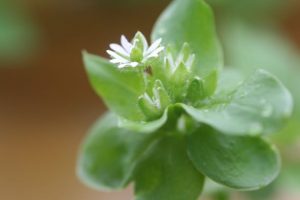
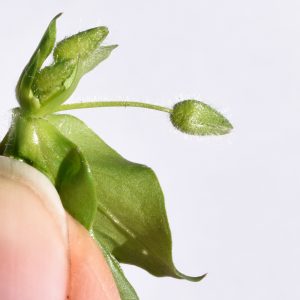
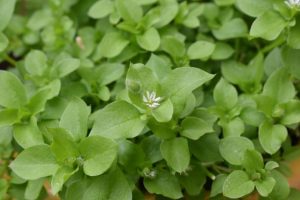
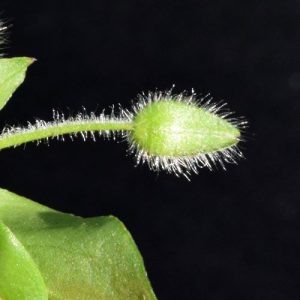
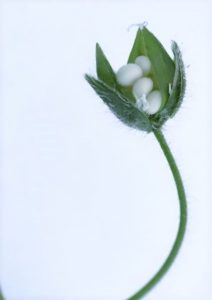

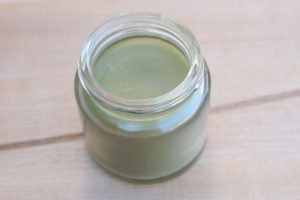

Geographic Distribution
Geographical distribution:
Australia: Predominantly South-East Australia and WA. NSW, QLD, VIC, TAS.
World: Native to Europe, North Africa and North Asia. Naturalised throughout North America.
Posology
Dried aerials: 3 – 15g daily
Growth
Light: part-shade in summer, full light in cooler seasons. Temperate areas. Moist soil preferred. Annual.
Therapeutic Preparations
Infusion, food, salad, pesto, infused oil, cream, ointment, tincture, juice
Taxonomy
Kingdom: Plantae
Phyla: Tracheophyta
Class: Angiospermatophyta
Order: Caryophyllales
Family: Caryophyllaceae
Genus: Stellaria
Species: media
Common name: Chickweed
Morphological Features
- Flower: Star-like flower with 5 petals (deeply lobed to look like 10). Cyme inflorescence. Sepals grow to 5mm wide. 3 – 5 stamen. Radially symmetrical. Flower grows to 10mm wide
Leaf: Soft and herbaceous, green leaves, smooth surface. Entire margin. Up to 40mm long. Ovate shape, simple structure. Line of fine hairs along stem. Petiolate attachment at base of stem, sessile attachment at apex.
- Fruit: Single chambered ovary. Capsule type fruit full of plentiful seeds. Seeds are white and mature to light brown. Seeds to 1mm long. Seeds upon magnification look like barnacles (seeds pictured right and under magnification overleaf)
Qualities
Cooling, moistening. Taste is succulent and herbaceous.
Parts Used
Stem, leaf, flower
Manufacture information can be found in our Botanarium Monograph #1 Wild ebook. Sign up to download above.
Galium aparine
(L) CLEAVERS, CLIVERS

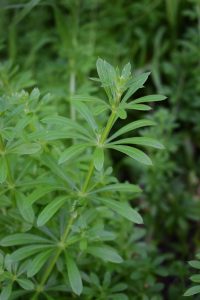
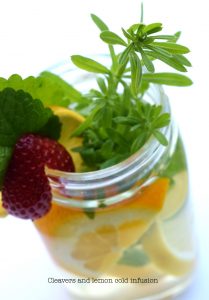
Geographic Distribution
Australia: Predominantly NSW, VIC, TAS.
World: Worldwide particularly North America, Europe, Asia and some parts of South America and Africa
Posology
Dried aerials 6 – 12g daily
Growth
Light: full light not essential, part shade. Temperate conditions to cool. Soil: well drained, loamy through to heavy soil. Annual.
Therapeutic Preparations
Infusion, food, salad, pesto, beauty wash and toner, cream, tincture, juice
Taxonomy
Kingdom: Plantae
Phyla: Tracheophyta
Class: Angiospermatophyta
Order: Gentianales
Family: Rubiaceae
Genus: Galium
Species: aparine
Common name: Cleavers, Clivers
Morphological Features
- Flower: White delicate flowers with 4 petals. Cyme inflorescence with 2 – 5 flowers per peduncle. 2 styles and 2 stigmas. Radially symmetrical. Flower grows to 10mm wide
Leaf: Lanceolate shape to slightly ovate. Up to 60mm long. Sessile attachment. Hairy on upper surface, hooked spines on lower surface. Scabrous margins. Tapered apex. Six nodes per leaf (whorl)
- Fruit: Schizocarp fruit, with globular shape. Up to 4mm long. Covered with hooked bristles. Green when young and brown at maturity. Compression in the middle of the fruit. Seeds remain viable for up to 6 years
Qualities
Cooling and pungent
Parts Used
Stem, leaf, flower
Manufacture information can be found in our Botanarium Monograph #1 Wild ebook. Sign up to download above.
Plantago lanceolata
(L) RIBWORT
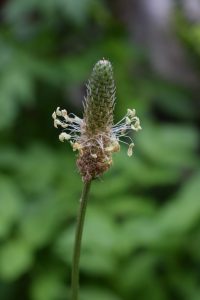

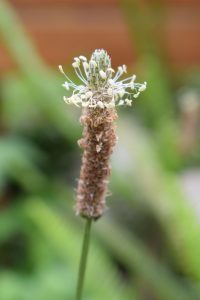
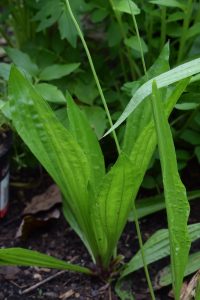
Geographic Distribution
Australia: Predominantly NSW, VIC, TAS.
World: Worldwide particularly North America, Europe, Asia and some parts of South America and Africa
Posology
Dried leaf: 6 – 12g daily.
Growth
Annual, biennial. Light: Full light or part shade. Temperate. Soil: low fertile okay, nitrogen-rich preferred, well drained
Therapeutic Preparations
Infusion, food, salad, crisps, infused oil, first aid, lotion and other topicals, tincture
Taxonomy
Kingdom: Plantae
Phyla: Tracheophyta
Class: Angiospermatophyta
Order: Lamiales
Family: Plantaginaceae
Genus: Plantago
Species: lanceolata
Common name: Ribwort, Lesser Plantain
Morphological Features
- Flower: White delicate flowers with 4 petals. Cyme inflorescence with 2 – 5 flowers per peduncle. 2 styles and 2 stigmas. Radially symmetrical. Flower grows to 10mm wide
- Leaf: Lanceolate shape to slightly ovate. Up to 60mm long. Sessile attachment. Hairy on upper surface, hooked spines on lower surface. Scabrous margins. Tapered apex. Six nodes per leaf (whorl).
- Fruit: Schizocarp fruit, with globular shape. Up to 4mm long. Covered with hooked bristles. Green when young and brown at maturity. Compression in the middle of the fruit. Seeds remain viable for up to 6 years.
Qualities
Leaf is cooling and drying.
Parts Used
Leaf, flower (food)
Manufacture information can be found in our Botanarium Monograph #1 Wild ebook. Sign up to download above.
